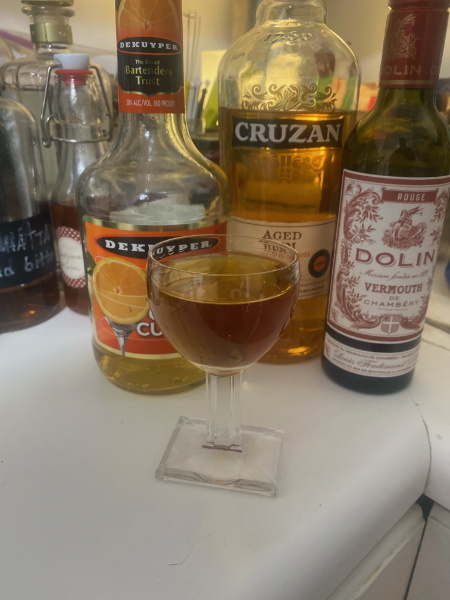I’m bored, so I’m taking random cocktail recipes from The Savoy Cocktail Book (1930), giving them a try, and modifying/improving them if I think it’s necessary, and reporting my findings here.
Pinky Cocktail
[p. 125]
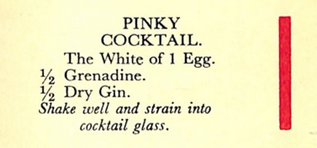
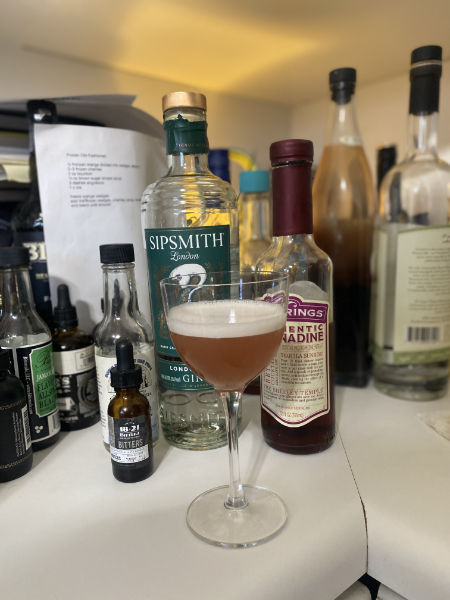
Easy enough: equal parts of gin and grenadine, frothed up with egg white. I hesitate to use egg whites per se; they’re messy, and what do you do with the yolks? Aquafaba is one substitute, and I’ve settled on Fee Bros. Fee Foam as easy, clean, and not as susceptible to making me sick with one microorganism or another.
Another pro tip: Do a “dry shake” of the ingredients to get the foam started, then add ice and shake before pouring.
It is a tasty, if sweet, concoction. I added a dash of hibiscus bitters, and that added a nice layer.
- 1 ½ oz dry gin
- 1 ½ oz grenadine
- 4–5 dashes Fee Bros. Fee Foam
- 1 dash hibiscus bitters
Ping-Pong Special
[p. 124]

I didn’t think this one would be good, and I was not wrong. Naturally, I did not make a batch for six people, but the recipe is easy enough: equal parts sloe gin and sweet vermouth, and then guess at the Angostura and curaçao.
It was gross. I didn’t even consider improving it. The sink wins this one.
SAVOY VARIATIONS SCORECARD:
- Savoy: 8
- Dale: 3
- Sink: 5

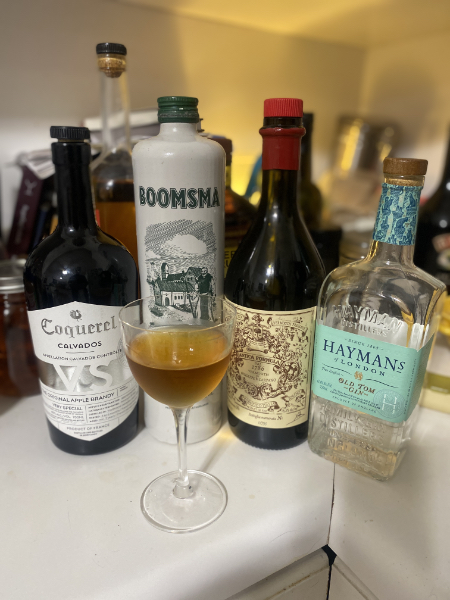 You will also notice that I used Old Tom gin. I was surprised to discover that I had no actual dry gin in the cabinet. Don’t know how that happened, so I may take steps to remedy that before making this again. Also, I could play around with the sweet vermouth to see if one of the others might bump it up a bit.
You will also notice that I used Old Tom gin. I was surprised to discover that I had no actual dry gin in the cabinet. Don’t know how that happened, so I may take steps to remedy that before making this again. Also, I could play around with the sweet vermouth to see if one of the others might bump it up a bit.

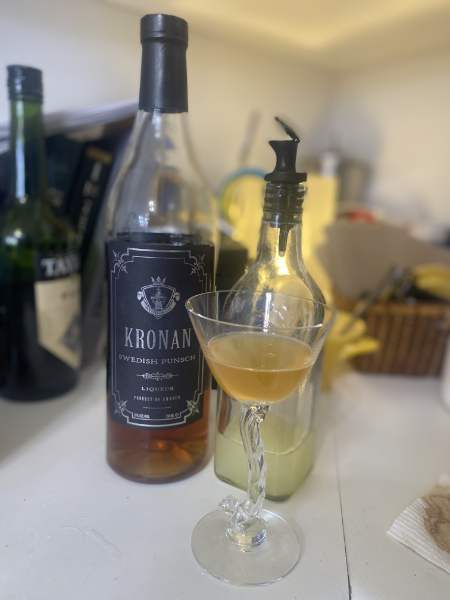


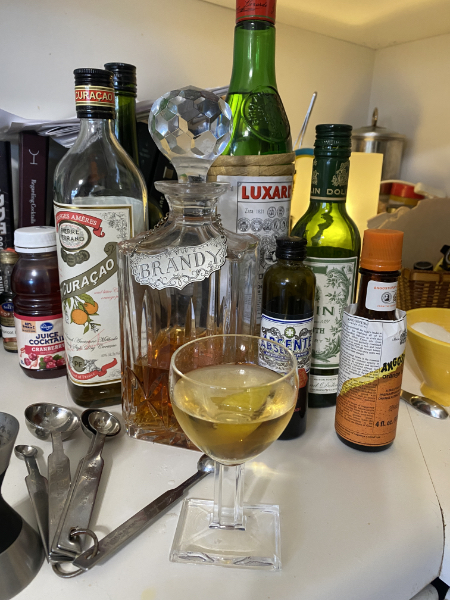

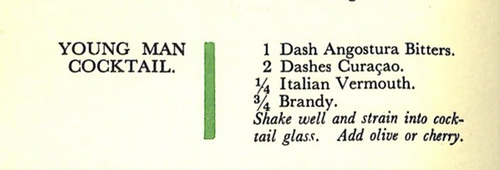
 I opened the Savoy Cocktail Book randomly and there was the White Lily Cocktail. Wow, I thought, there is no way that this is going to be palatable. Rum + gin? And a dash of absinthe?
I opened the Savoy Cocktail Book randomly and there was the White Lily Cocktail. Wow, I thought, there is no way that this is going to be palatable. Rum + gin? And a dash of absinthe?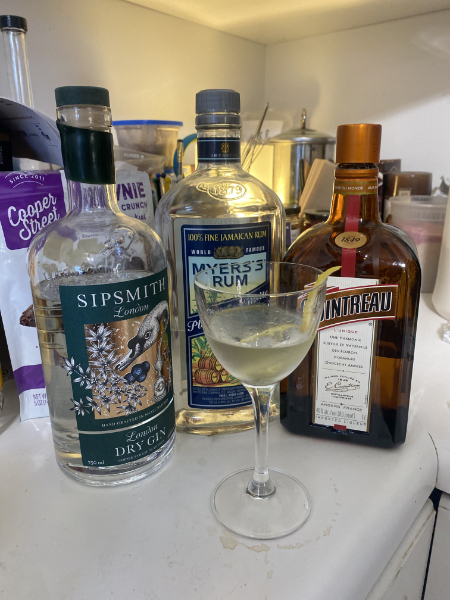
 This one turned out to be a winner, but it took some figuring. The original recipe confirms my suspicion that most of these 700+ recipes were just quick slugs for the Bright Young Things who splashed into the Savoy before heading out to the jazz clubs — no self-respecting bartender these days would publish a recipe with no actual measurements.
This one turned out to be a winner, but it took some figuring. The original recipe confirms my suspicion that most of these 700+ recipes were just quick slugs for the Bright Young Things who splashed into the Savoy before heading out to the jazz clubs — no self-respecting bartender these days would publish a recipe with no actual measurements.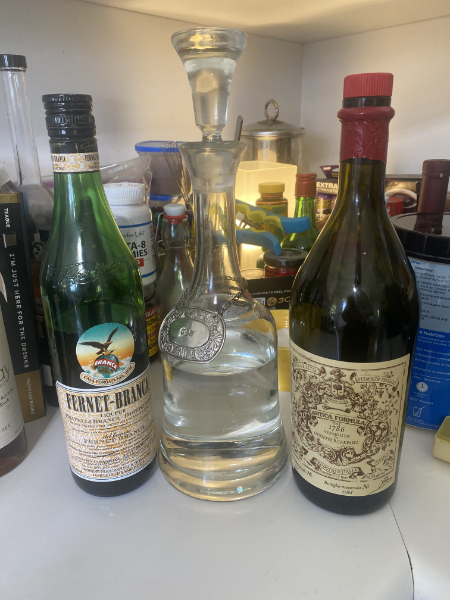 I figured I was going to hate this one before I even started: Fernet Branca, while a darling of professional bartenders
I figured I was going to hate this one before I even started: Fernet Branca, while a darling of professional bartenders Vecchio Amaro Cocktail
Vecchio Amaro Cocktail